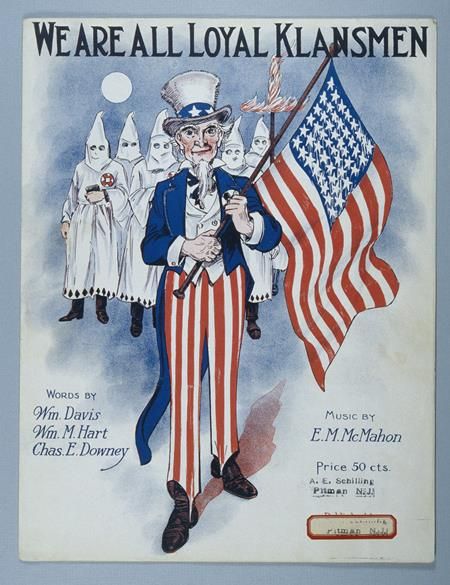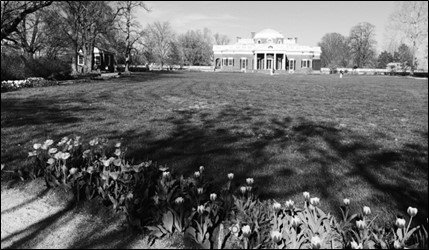
The common impression about the Klan is that it is a Southern anti-Black White Supremacist group and that the group’s characteristics and methods have been consistent since its inception. As anyone with more than a superficial knowledge of history knows, this is far from true, yet modern historians and commentators, many of the neo-conservative variety, seemingly purposely perpetuate these myths. The Klan has had three significantly different incarnations and the 2nd Klan of the progressive era, which was by far its high water mark, was deeply tied to Northern Progressive Christianity (sometimes generally referred to as the social gospel movement) and progressive politics. In fact, it was highly entwined with all the progressive social reform movements of the time and the people and causes can be fairly directly traced to Yankee activism of the mid-1800’s leading up to the War Between the States.
The second Klan was started in 1915 and declined rapidly in scandal and in fighting by 1926[1] with their maximum reach and membership coming from 1921 to 1924.[2] It was many times larger than the first Klan claiming, in what was probably an exaggeration, four million to six million members at their peak. Although they didn’t publish membership rolls, a more accepted estimate would be 1.5 to 2 million dues paying members, which was still very large compared to other political and social institutions of the time.[3] They had trouble collecting dues which were expensive making estimating dues paying members somewhat more difficult. It owned or controlled about 150 magazines and newspapers. [4]
Despite some uncertainty on membership roles, it is safe to assume that the Klan was significantly stronger in the North and the West than in the South. The Indiana Klan was the most well-documented, with claimed membership numbers ranging between 160,000 to 400,000 (depending on source and date) which is made more complicated by splinter and auxiliary groups that came and went in a narrow band of time.[5] Writing in 1967 historian Kenneth Jackson disproved the small town hick thesis by showing the Klan’s great strength was in cities. Studying nine cities between 1915 and 1930 showed that 50% of active Klan’s people were urbanites and 32% lived in the largest cities. There were at least 50,000 Klansmen in Chicago, 38,000 in Indianapolis, 35,000 in Philadelphia, and the same number in Detroit.[6] Per capita membership was higher in urban areas and note that all these cities were in the North. These were also areas with the highest immigrant and Catholic populations and some were starting to see Black immigration. The Klan had strong west coast representation, as well, in places like Oregon and California. In San Francisco, which was a much smaller city than the East Coast and Midwest examples previously cited, there were app 3,500 members in the early 1920’s. A similar, but smaller organization, the anti-Catholic American Protective Association also saw boosts in membership and had a notable presence in California.[7]
Due to lack of data, a real quantifiable comparison of party affiliation can’t be made although it could be arguably estimated demographically. Klan ratings and recommendations on national legislators seemed to be fairly balanced between the major parties and they were also associated with the minor parties like the Prohibition Party. Due to party realignments that had already happened by this time in reaction to populism, which produced effectively two progressive parties[8] with a small developing conservative movement[9], party affiliations didn’t matter to the extent they previously did so it would probably be reasonable not to expect a clear pattern although the Klan’s positions aligned closely with the Republican party of the 1800’s. In modern neo-conservative talking points the 2nd Klan is consistently portrayed as being a Democratic institution solely.
The Klan’s enemy list was adaptable based on where they were but generally emphasized ethnic and religious superiority and maintenance of social order.[10] In the South, and in areas starting to receive economic migration from the South at that time, African Americans may have been more prominent than in other areas but were never a primary focus of the group. In California and Oregon it targeted Hispanics, Irish, and Chinese. The regional Klan branches varied considerably and some of the positions and literature were even contradictory. The consistent villains however were Catholics and the Catholic Church and anybody or anything having to do with alcoholic production and consumption. From today’s perspective, it’s hard for people to realize the importance of ethnic and religious conflict amongst people of European decent in the 1800’s and early 1900’s but this really defined politics.[11] The Klan was linked to Eugenics and seemed to be especially sensitive to interracial unions that would dilute the northern European protestant population.
The second Klan was a money making operation and was structured somewhat like volunteer organizations and professional societies today. They sold memberships which were expensive and renewed annually, along with related products like costumes (again expensive) and published and sold periodicals. The Klan rated politicians and made recommendations on candidates and sponsored/organized fair type events with very large attendance (similar to state fair). In terms of income demographics they were middle to upper middle class. Due to cost, this would have had to be the case, you can’t get rich from poor people and the South was overwhelmingly poor with a much smaller population. The most common profession for a Klan member was “independent business man”, which included farmers, and the second most common was evangelical minister or church worker.[12]
Because the Klan was principally out in the open, similar to fraternal organization, and didn’t directly advocate violence, it’s hard to conclusively establish to what extent they can be connected with it. Acts of violence or vigilantism would have been associated with a very small percentage of total membership, still images of vigilantism and bravado attracted members so this tended to be a fine line. [13] Of incidents that could be associated with the Klan, the most common targets were saloons, Catholics and Catholic churches, liquor distributors, and miscegenation or mixed race unions. They may also have been involved with union violence but on both sides depending on where and when. Some of the more notable acts of violence or coercion may seem somewhat surprising in terms of location, scale, and targets. For example, in Anaheim, California Klansmen launched raids on several locations in one evening, turning up and turning in, they claimed fifty-two bootleggers. In cases like these, which were fairly common except in scale, they were unwanted civilian extensions of law enforcement.[14] Author Thomas Pegman of Loyola University, summarized Klan violence as follows: “Historians of the Klan have clearly established that the order’s moral vigilantism was not exercised solely, or even chiefly, against African-Americans. The overwhelming majority of victims subjected to Klan beatings, whippings, and more serious violence were white.”[15]
Aside from print media, the primary in person recruitment methods were fair events and through other fraternal organizations, which were very popular during this time period. The fraternal organization they were most associated with were the Masons, which was also staunchly anti-Catholic. They also recruited heavily in Evangelical churches and this includes both the Progressive variety and the expanding fundamentalist churches focusing heavily on the clergy itself, although denominations as a whole never endorsed or supported the group. They don’t appear to have had significant ties to orthodox Protestant groups that were neither followers of the social gospel or new fundamentalism of the time.
About 20% of the Klan movement was female including some of its leadership. One notable person who also had a role in the history of feminism was Elizabeth Tyler who could be considered a founder of the group and came into the core membership through her eugenics activism. Another was Daisy Douglas Barr who was a Quaker from Indiana, again fitting the northern pietist activist stereotype perfectly (about 7% of the Indiana Klan membership were Quakers although Quakers as a whole made up a very small percentage of the population). Quoting from the Second Coming of the KKK on events leading to the ultimate demise of the group, “Tyler was finally forced to resign by accusations, almost certainly true, of embezzling Klan money but she had been a gift to the Klan. The organization might well have grown without this driven, bold corrupt and precociously entrepreneurial woman, but it would likely have been much smaller.” [16]
The 2nd Klan had several significant political accomplishments that had long lasting effects. Along with supporting prohibition and the 18th Amendment, they also advocated designating certain drugs as being illegal and controlled. The Klan played a leading role in implementing immigration controls favoring Northern European countries which stayed in place until the immigration act of ’64. They supported mandatory public education as a means of “Americanization” and vigorously opposed private parochial schools which was targeted principally at Catholic schools and school systems. The Klan generally supported women’s suffrage and had ties to the eugenics movement.
An interesting lingering question about the 2nd Klan, considering they aligned so closely with the progressive political and religious agenda, is why they chose a name and adopted a history from an element of southern reconstruction (or recreation) that would seem to have so little in common. There are three potential answers to this, other than simple marketing. Fundamentalism by 1915 had made substantial, if not dramatic inroads, into Southern religion and Southern culture thus spreading a form of puritan pietism to the South far more effectively than re-education attempts following the war ever could. Secondly, through the effects of populism and progressivism, segregation and racial animus had been codified in many parts of the South while Black migration north had reached a level where the real racial attitudes of the Yankee were being shown to be, if anything, worse by way of comparison. Lastly, there seemed to be a sort of era of good feeling around this time between the North and South, at least as it was perceived politically and culturally, that invited a sort of combining of protestant heritage.
A couple of things the 2nd Klan definitely wasn’t
are anti-elitist or Southern, despite attempts by modern historians and
commentators to portray them as such.
They represented the North Eastern Puritan ruling class historical beliefs
and religious traditions almost perfectly.
If anything they spread these beliefs to people and places where they
generally didn’t exist. As to being
Southern, few of the beliefs and characteristics of the 2nd Klan
trace at all to the antebellum South which had a very different religious
heritage from the activist North. This
argument is nothing more than looking in the mirror, not liking what you see,
and claiming it’s an image of someone else.
[1] Thomas Pegram, One Hundred Percent American, Rebirth and Decline of the Ku Klux Klan in the 1920’s, paperback, p. 16-18
[2] ibid, p. 7 -8
[3] Linda Gordon, The Second coming of the KKK, 1st Ed paperback, p. 2
[4] ibid, p. 3
[5] Thomas Pegram, One Hundred Percent American, Rebirth and Decline of the Ku Klux Klan in the 1920’s,paperback p. 25-27
[6] Kenneth T. Jackson, The Ku Klux Klan in the City, 1915 – 1930, paper back p. 235 -249
[7] Murray N Rothbard, The Progressive Era, paperback p 307
[8] Murray N Rothbard, The Progressive Era, paperback, p. 163 – 178
[9] Murray N Rothbard, the Betrayal of the American Right, hardback, p. 3 – 32
[10] Linda Gordon, The Second coming of the KKK, 1st Ed paperback p. 26-30
[11] Thomas Pegram, One Hundred Percent American, Rebirth and Decline of the Ku Klux Klan in the 1920’s, paperback p. 62-70
[12] Linda Gordon, The Second coming of the KKK, 1st Ed paperback p. 185 – 186
[13] ibid, p. 99
[14] Linda Gordon, The Second coming of the KKK, p. 99
[15] Thomas Pegram, One Hundred Percent American, Rebirth and Decline of the Ku Klux Klan in the 1920’s, p. 65
[16] Linda Gordon, The Second coming of the KKK, p. 115






